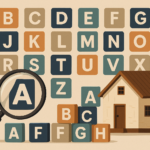
Key takeaways
Gentrification is a powerful force in our property markets.
Knockdown-rebuild activity often precedes gentrification and capital growth, offering upside for early movers.
High demolition activity often occurs in established, high-demand suburbs where vacant land is scarce.
Buyers are choosing to knock down older homes and rebuild, indicating strong belief in the suburb’s future value.
Demolitions point to land value appreciation—when the building is irrelevant, it’s the land that matters.
These trends reinforce the importance of buying in land-dominant locations with strong long-term fundamentals.
Every now and then, a quiet indicator pops up in the property data that says a lot about where the market is heading – not in flashy headlines, but in subtle, structural shifts that shape how our cities evolve.
One of those indicators?
Residential demolitions.
Sure, they don’t sound as glamorous as skyrocketing median prices or clearance rates.
But if you want to understand which suburbs are being reshaped from the ground up and where long-term value is being unlocked, then demolition trends are worth paying close attention to.
And that’s exactly what the latest research from Ray White reveals.

A closer look at the data
In a study released by Ray White crunched the numbers on the suburbs with the highest number of residential demolitions over the past year, based on building approvals lodged with the Australian Bureau of Statistics.
Their findings?
Some of Australia’s most sought-after, established suburbs are leading the way in knockdowns, a trend that speaks volumes about the broader property cycle and the changing face of our cities.
As Nerida Conisbee, Ray White Chief Economist, puts it:
“Demolitions are a sign of renewal, and a strong indicator of demand. It’s not always possible to build on vacant land, so people knock down old homes to make way for something new.
This often happens in high-demand areas.”
Put simply, if people are bulldozing perfectly functional (albeit dated) houses to rebuild, it signals two things:
-
The land is significantly more valuable than the building on it, and
-
The location is considered worth reinvesting in for the long haul.
Let’s break down the key markets.
Top demolition suburbs by state
Victoria: Boroondara is leading the charge
-
Boroondara saw a whopping 684 residential demolitions in the last 12 months – more than any other local government area in Australia.
-
This LGA includes prestige suburbs like Hawthorn, Camberwell, Balwyn, and Kew – all long-time favourites for affluent families and professionals.
-
Other top performers include Whitehorse (368 demolitions) and Glen Eira (285), both of which are middle-ring suburbs with excellent amenities, schooling options, and increasing gentrification.
These areas are experiencing a significant change in housing stock, with many older Californian bungalows, post-war weatherboards, and brick veneers making way for large family homes or luxury duplexes.
Ms Conisbee explains:
“Victoria dominates the list because of the age of its housing stock and the fact that many of its high-demand suburbs are fully developed, forcing buyers to either renovate or rebuild."
New South Wales: tightly held, high-value areas being reimagined
-
Ku-ring-gai was the top demolition LGA in NSW, with 287 approvals. Suburbs like Killara, Gordon, and Turramurra are known for their leafy streets and large family homes.
-
Northern Beaches (267 demolitions) and Hornsby (203) follow closely.
What these areas share is:
-
Larger block sizes,
-
Dated housing stock ripe for redevelopment, and
-
High owner-occupier appeal with long-term growth fundamentals.
Interestingly, we’re seeing a slow but steady push towards medium-density infill in these suburbs, especially where planning permits allow dual occupancy.
This is particularly relevant given the state government's renewed push to encourage gentle densification near transport corridors.
Queensland: SEQ rebuilds on the rise
-
Brisbane City tops the Queensland list with 283 demolitions.
-
Noosa (164) and Gold Coast (149) round out the top three.
The South-East Queensland market has undergone a transformation in recent years, buoyed by interstate migration, strong job creation, and lifestyle appeal.
In Brisbane, especially, we’re seeing a wave of inner-city knockdowns and rebuilds in suburbs like Paddington, New Farm, and Bulimba – older cottages being replaced by high-spec, architecturally designed homes.
And in Noosa, we’re witnessing older beach shacks being bulldozed to make way for luxury holiday homes – another clear sign of wealth migration and land scarcity.
What does this mean for investors?
At first glance, demolition approvals may just seem like a builder’s business, but for seasoned investors, they’re a lead indicator of gentrification, rising land values, and shifting demand.
Here’s why:
1. Land becomes the primary asset
When people are paying top dollar to knock down an old house, they’re essentially saying: “I don’t care about the house – I want the location.”
This is a huge vote of confidence in the suburb’s future.
As we often advise, buying in areas where the value is in the land, not just the building, is a cornerstone of strategic property investment.
2. Regeneration signals future upside
Knockdowns typically precede a wave of capital spending – new builds, landscaping, streetscape improvements, and eventually higher property values.
Investors who buy just before a wave of redevelopment often ride a significant uplift as the suburb transitions.
3. Supply constraints drive value
In many of these older suburbs, new supply is limited.
That scarcity, coupled with increasing demand from higher-income households, creates the kind of conditions that underpin long-term capital growth.
And with Australia needing to build over 1.2 million new homes by 2029 (as the National Housing Accord targets), infill development in existing suburbs will become increasingly important – and profitable.
Where to from here?
If you’re an investor or homebuyer looking to build wealth over the long term, then these demolition hotspots offer a compelling lens into where the market sees future value.
These aren’t fringe suburbs or speculative locations.
They’re established, proven areas where people are choosing to knock down homes and rebuild to suit modern tastes and higher expectations.
And that kind of behaviour only happens where confidence and demand converge.
So next time you see a bulldozer rolling through a quiet suburban street, don’t just think “there goes the neighbourhood” – think “there goes another clue about the next phase of the property cycle.”
Because when the wrecking ball swings, it’s often swinging toward opportunity.
If you've been following my blogs for a while you will know that Metropole places a lot of emphasis on demographic changes in our research into suburbs we recommend for investment, and gentrification is one of the manufacturers we look at.
If you'd like to understand a little more about how you can use the same research to help make your investment decision why not have a obligation free chat with one of our Wealth Strategists? Just leave your details here.














